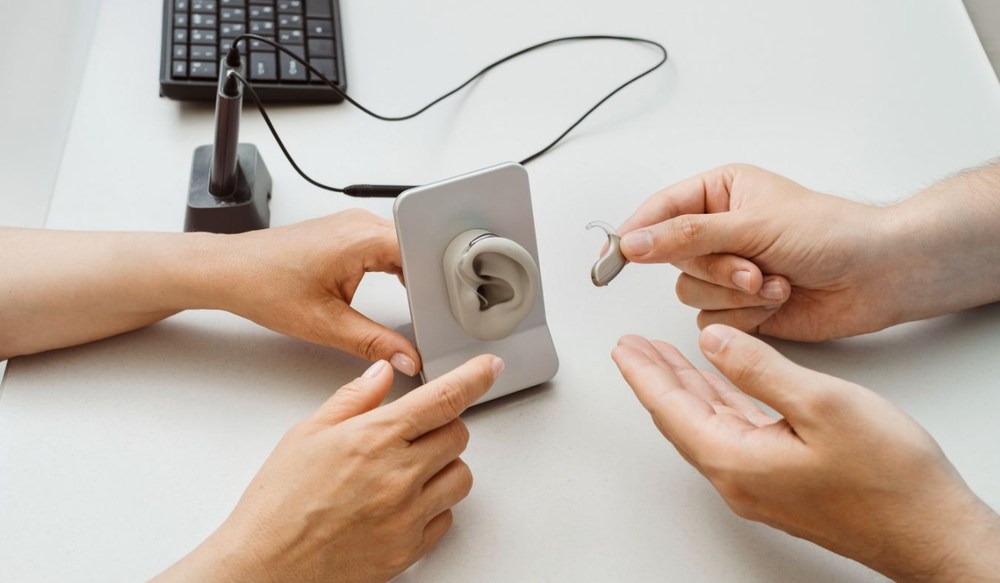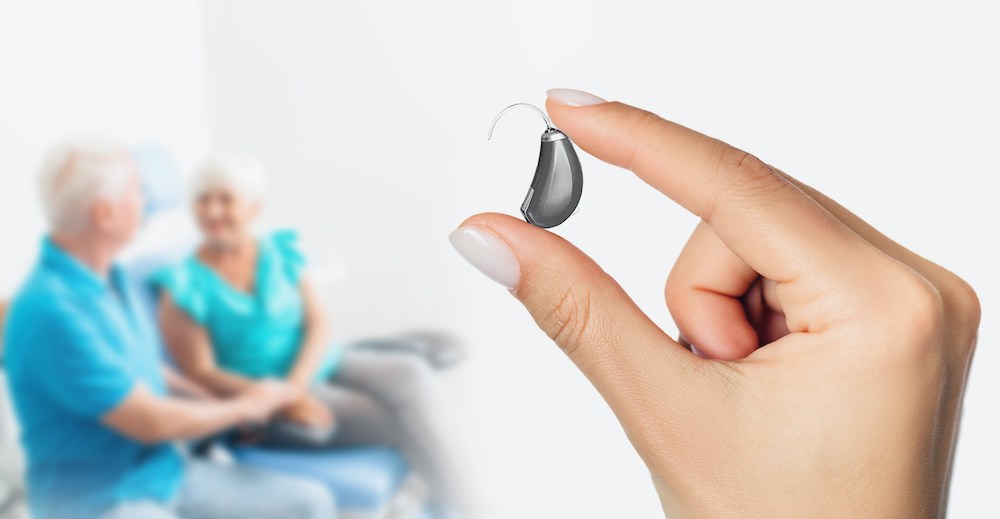The Impact of Hearing Aid Design on Wearer Comfort
Hearing aid design directly affects whether people actually use them. If a

By: admin | September 24, 2025
Many people expect hearing aids to provide clear hearing in every situation, but real-life environments can affect how well your devices work. Busy restaurants, quiet parks, crowded streets and even your own living room all present different listening challenges. Knowing how these places impact your hearing aids can help you use them more effectively and feel more confident in daily life.
Hearing aids are designed to help you hear better in many situations, but they do not remove all background noise or adjust perfectly to every change in your surroundings. Sometimes, following conversations or picking up important sounds can be difficult as you move from one place to another. Understanding how your environment affects your hearing aids is key to getting the most benefit from them.
Hearing aids use tiny microphones to pick up sounds in your environment, then send those sounds through a processor that amplifies speech while lowering the impact of unwanted background noise. This technology helps make voices stand out so you can follow conversations more easily, even in busy settings. Modern devices are designed to recognize patterns in sound, which means they can adjust how much they amplify based on whether you are in a quiet living room, a bustling restaurant or outside on a windy day.
When you move from one environment to another, like stepping from a quiet office into a crowded street, your hearing aids may take a brief moment to adjust. Some models handle this automatically, using built-in software to recognize and respond to changes in your surroundings. Others give you manual control through buttons, smartphone apps or remote devices, so you can select a program that fits the situation.
Getting familiar with these features can make your hearing aids feel more natural to use throughout the day. Instead of struggling with sudden changes in noise, you can stay focused on conversations, enjoy your favorite activities and feel more at ease no matter where you are. The more you practice using these settings, the more confident you will feel about handling a wide range of listening environments.
Background noise varies from place to place. A busy restaurant, a shopping mall or your living room each has its own mix of sounds that can affect how well you hear. In some places, background noise can make it hard to focus on speech. Adjusting your hearing aids or choosing where you sit can help you hear better in these situations.
In addition to location, the type of noise matters. Constant hums from air conditioners or traffic can be easier for your hearing aids to filter than sudden, sharp sounds like dishes clattering or children shouting. Learning to recognize which kinds of sounds are most challenging for you makes it easier to adjust your position, settings or expectations when heading into different environments.
Quiet rooms can feel different when you are wearing hearing aids. You may notice small sounds, like the hum of a refrigerator or footsteps, that you did not hear before. This is a normal part of getting used to new hearing levels. Some people find their own voice sounds louder or more echo-like in quiet spaces. Many modern hearing aids have features to soften these effects, but it may take time for your brain to adjust. If you use assistive listening devices at home, they can help balance sound and make conversations feel more natural.
Over time, your brain learns which sounds to focus on and which to tune out, but this process does not happen overnight. Regularly spending time in quiet environments while wearing your hearing aids helps your brain adapt more quickly. If you are patient with the adjustment period, these small background sounds will begin to fade into the background just as they do for people with typical hearing.
Noisy places can make following a conversation difficult, even with hearing aids. Background sounds like clinking dishes or loud music can make it hard to focus on the person speaking. To make conversations easier, try facing the person you are talking to and ask them to speak clearly. Moving to a quieter spot or sitting with your back to the noise can also help. With practice and a few small changes, you can feel more comfortable during conversations in busy places.
Another way to handle noisy environments is to plan ahead. If you know you will be going somewhere crowded, consider going during less busy hours or choosing seating away from speakers, kitchens or entrances. Some hearing aids also offer specific noise-reduction programs for social settings, and becoming familiar with when and how to use these features can make conversations feel less stressful.
Being outdoors brings its own set of challenges for hearing aid wearers. Wind, traffic and sudden loud noises can make it harder to hear clearly. Some common outdoor issues include wind noise across the microphones, sudden sounds like sirens or barking dogs, and difficulty hearing conversations during outdoor activities. Knowing about these challenges can help you prepare and adjust your hearing aids or habits when outside, so you can enjoy your time outdoors more fully.
Many hearing aids include features designed to make outdoor listening easier. Wind reduction settings can limit the whooshing sound across microphones, while directional microphones help focus on the voices in front of you rather than background distractions. Simple habits, like wearing a hat to block wind or finding a quieter spot away from heavy traffic, can also improve your listening comfort. With the right mix of technology and small adjustments, spending time outdoors can remain enjoyable and less stressful.
Large open spaces like gymnasiums, churches or auditoriums can make listening with hearing aids more difficult because sound bounces off walls and creates echoes. Voices may sound farther away or blend together. To hear better in these environments, try sitting closer to the speaker, facing them directly and using any special programs on your hearing aids designed for large spaces. Choosing seats away from loud groups or speakers can also help. Experimenting with different seating options and settings can improve your listening experience during events.
Social events often have many voices and background noise, which can make it hard to follow conversations. Hearing aids have features that help focus on the person speaking, but these work best when you are close and facing the speaker. Choosing quieter spots or smaller group settings can make speech easier to understand. Practicing good communication habits, like making eye contact and asking others to speak clearly, can also help you feel more comfortable at gatherings.
Sudden loud noises like a door slamming or a dog barking can seem sharper when you are wearing hearing aids. Many modern devices have features that soften or limit very loud sounds to protect your ears and keep you comfortable. Knowing how your hearing aids respond to sudden noises can help you feel less startled and more at ease in busy environments.
Enjoying television and movies is easier when you can hear dialogue and sound effects clearly. Background music or fast speech can sometimes make it hard to follow what is happening on screen. Using closed captions or subtitles is a simple way to catch every word. Some hearing aids connect directly to your TV through wireless accessories, sending sound straight to your ears for better clarity. Sitting closer to the television and lowering other noises in the room can also help.
Public transportation and busy streets are often very loud, with engines, horns and crowds mixing together. This can make it hard to focus on important sounds like announcements or conversations. Many hearing aids have settings for noisy environments that help reduce background sounds and make speech clearer. Adjusting your volume or using these special programs can improve your listening experience. Paying attention to visual cues like signs or gestures can also help in these situations.
Phone calls can be tricky with hearing aids, but a few simple steps can help. Hold the phone near the top of your ear, just above your hearing aid’s microphone, or use speakerphone or Bluetooth features if available. Keeping background noise low and asking people to speak at a steady pace can also make calls easier to follow.
Many modern hearing aids are designed with wireless features that pair directly with your phone, sending sound straight into your ears. This can make calls much clearer, especially in places where outside noise might otherwise get in the way. If your devices do not have Bluetooth, you can still improve calls by choosing a quiet space, adjusting the volume to a comfortable level and letting the caller know you are using hearing aids so they can speak more clearly. Practicing these habits helps make phone conversations feel less stressful and more natural.
Learning how to use the manual controls on your hearing aids gives you more control over your listening experience. Many devices have buttons or switches for adjusting volume, changing programs or muting sounds. Here is a quick checklist:
Recognizing how different settings influence your hearing aids can make everyday listening feel less overwhelming. With awareness and practice, you can adjust to busy or quiet places more smoothly and make the most of the technology you have. The goal is not perfect silence or flawless hearing, but learning how to work with your devices so you feel more at ease no matter where you are.
If you ever feel unsure about how your hearing aids are performing, you do not have to figure it out alone. Our team is here to walk through your questions, explain features and help you find strategies that fit your lifestyle. You can reach Great Lakes Bay Hearing in Michigan’s Bay City at (989) 941-0627 or Midland at (989) 941-0627 to schedule a visit and learn more about getting the best results from your hearing aids.
Tags: assistive listening devices, hearing aid styles, hearing aid technology

Hearing aid design directly affects whether people actually use them. If a
By: admin | November 18, 2025

Many people expect hearing aids to provide clear hearing in every
By: admin | September 24, 2025

Hearing affects almost every interaction we have at work – from team
By: admin | May 23, 2025
